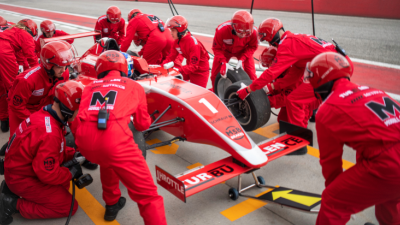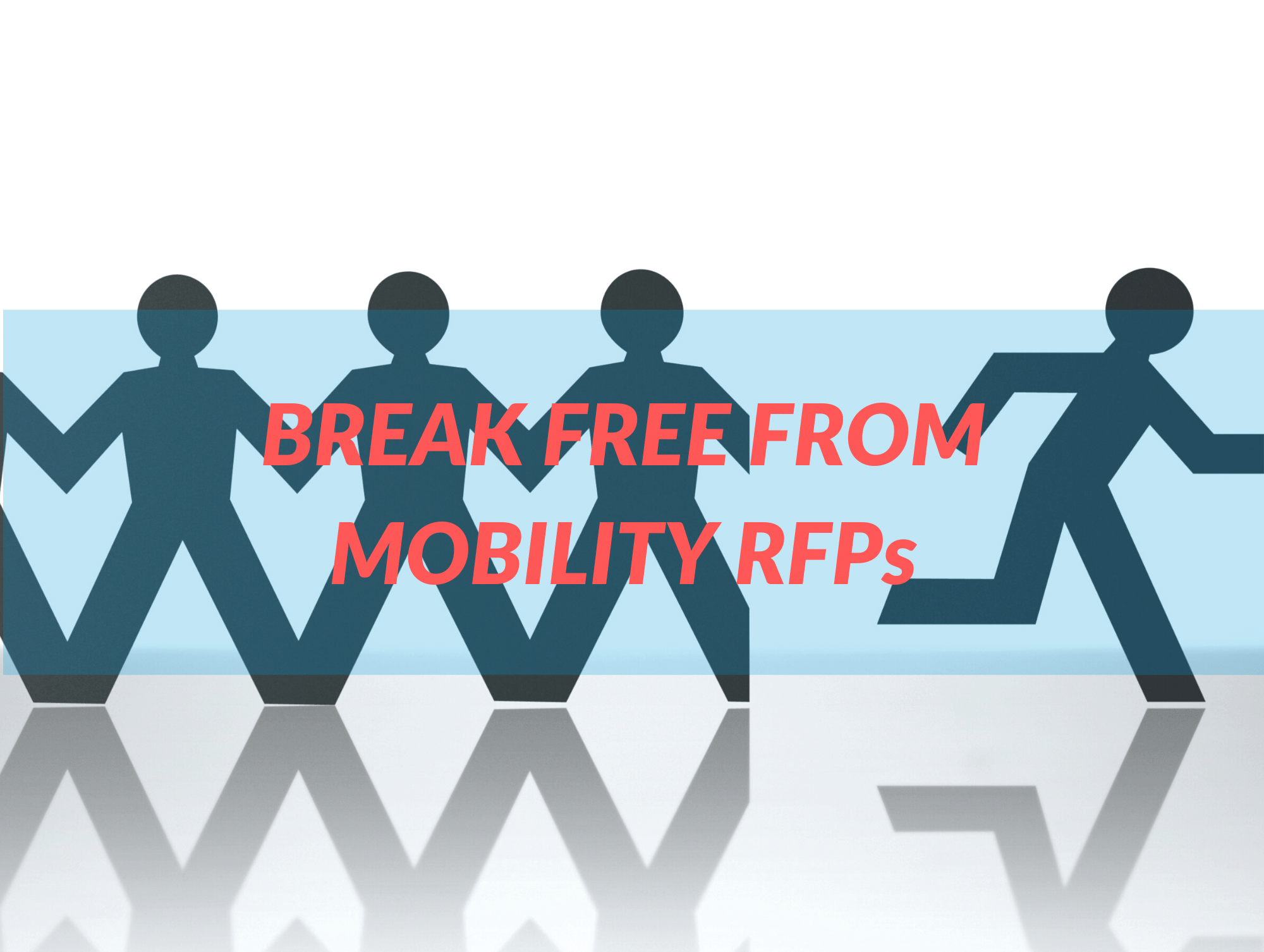Jul 14, 2022 PricePoint Webinar Recap: Break free from mobility RFPs
By Kathryn Keho
PricePoint recently hosted a webinar, Break free from mobility RFPs – Rethink sourcing, redefine value, realize savings, where we explored whether the traditional RFP serves to truly deliver value to mobility programs.
Seems like a simple question, but in today’s increasingly complicated talent, mobility, and procurement environments, running a traditional RFP can feel a little dated.
While imperfect, we know RFPs are not likely to go away any time soon. But if you do decide to embark on a major mobility RFP, it’s critical for decision-makers to know how to identify company goals and objectives, mitigate the many pitfalls of the RFP process, and achieve the actual desired outcomes for their companies and suppliers.
So, is it possible for sourcing to be done differently? For a primer – and maybe some inspiration – on how to rethink the entire process, we invite you to watch the webinar recording.
In the meantime, here are some of the key takeaways shared by our presenters, retired ExxonMobil sourcing specialist Vivian Wu and PricePoint President Ryan Keintz.
 Pricing isn’t everything to look for in a mobility RFP
Pricing isn’t everything to look for in a mobility RFP
Where there’s a good fit for RFPs, they can achieve overall cost savings and performance for your program. But it’s important to recognize that pricing is only one part of the total value proposition offered by your suppliers. Complex services like HHG moving have a significant customer-centric component, and suppliers bring a level of knowledge that can be challenging to account for within the framework of a typical mobility RFP.
There’s no such thing as “winning” a mobility RFP
A major contract is a tantalizing prospect - so much so that respondents spend hundreds of hours compiling their responses and stretch their pricing and service commitments to the max. For corporates, it’s not uncommon to undergo a major RFP only to end up with pricing that’s higher than it was before. Begs the question whether the process is win-win or lose-lose? Bottom line: no matter what the outcome, the RFP process leaves everyone involved weary and wounded.
 Mobility RFPs have unintended costs
Mobility RFPs have unintended costs
Lengthy bid processes subject your suppliers to intense scrutiny and competition. Respondents are expected to offer their best pricing and innovation, but knowing there’s little chance they’ll be awarded the contract. Worse still, the incumbent may find their account is suddenly, arbitrarily up for grabs despite a strong track record. If you’re looking to foster a collaborative, creative, value-generating environment with your suppliers, a grueling, competitive bid environment will have precisely the opposite effect.
Turn your incumbent's strategic advantage into your advantage
It’s estimated that 60-90% of incumbents retain the business after an RFP. Why put everyone through such a punishing process? Your incumbent suppliers already know more about serving your business – the good, the bad, and the ugly – than you do. They should be leveraged as much as possible for their insights and recommendations to optimize your program. Rather than running an RFP, consider running a market benchmarking exercise instead, and engage your incumbents as strategic advisors within those findings.
Define your organization’s mobility goals so you know where you’re going
It can be challenging for mobility managers to find time to keep up with rapid change in the industry and complex transferee needs. Companies will often go to RFP as a massive information-gathering exercise, asking respondents for innovative solutions to solve undefined problems. But RFPs take an enormous amount of time and resources for both the respondents and the client. As a fishing exercise, poorly structured RFPs are detrimental to individual relationships, erode confidence in the moving industry, and create endless opportunities for price manipulation.
Utilize experts to minimize downtime and distortion
Imagine you must change your tires. You’ll need a jack, blocks, a torque wrench, sockets, the lock nut, and something to kneel on. You might be able to swap a tire in 10-15 minutes, if you know what you’re doing (and you can find your tools). Compare and contrast this process to an F1 pitstop, in which experts change all four wheels in less than two seconds.
 Now take that analogy and apply it to running a HHG RFP. The typical process drags on for months, sometimes years, to prepare the RFP and analyze the responses. By contrast, PricePoint has access to millions of tariffs from thousands of movers worldwide that corporate clients can use for benchmarking and market analysis to optimize their HHG moving program. The result? Rather than committing to a massive RFP process, PricePoint has carved out the moving function to complete RFPs in one business quarter – and deliver a better performing move program.
Now take that analogy and apply it to running a HHG RFP. The typical process drags on for months, sometimes years, to prepare the RFP and analyze the responses. By contrast, PricePoint has access to millions of tariffs from thousands of movers worldwide that corporate clients can use for benchmarking and market analysis to optimize their HHG moving program. The result? Rather than committing to a massive RFP process, PricePoint has carved out the moving function to complete RFPs in one business quarter – and deliver a better performing move program.
“When our clients felt it was time to review their moving services on the supply chain side, they were turning to us as their subject matter experts. That expertise enabled us to renovate the conventional RFP pricing process, much like a highly efficient pitstop.” - Ryan Keintz
Regionalize to optimize your supply chain structure
It’s critical to establish a solid foundation of where you want to go with your purchasing process. Do the work up front and map out what your optimal supply chain process looks like. If you run a major international move program, start by decentralizing your supplier network and shift to specialized regional suppliers instead. It might seem most efficient to run operations out of one service hub, but time zone lags can impact service delivery on urgent HHG move situations, for example. Regional partners may be more responsive and eliminate a layer of cost versus a centralized booker.
Build the right framework to evaluate mobility RFP pricing
Ultimately, the RFP centers around soliciting a rate matrix from selected suppliers, and there are important design elements to consider in order to ensure the process is streamlined and transparent.
 Pricing should be built on a component basis, rather than door to door. When broken down to component level, you have the flexibility to (a) exclude freight, which is far too volatile in the post-COVID world to be included in an RFP, and (b) include supplementals as a KPI for greater transparency.
Pricing should be built on a component basis, rather than door to door. When broken down to component level, you have the flexibility to (a) exclude freight, which is far too volatile in the post-COVID world to be included in an RFP, and (b) include supplementals as a KPI for greater transparency.
Further to the importance of regionalizing your service delivery, it can be beneficial to zoom in on your location data to identify your company’s specific high traffic areas and share this location data within the RFP to select the best service providers in those markets. This has the added benefit of neutralizing some of the incumbent advantage.
Keep moving services RFPs distinct from larger mobility RFPs. This decoupling allows moving services to be handled more quickly and begin generating improved savings and service. All this is with a view to balancing analysis weighting and move policy allowances specific to your program.
The complex demands of today’s mobility programs demand a more agile, innovative approach to sourcing suppliers. As an industry, we can take this bit by bit, and test ways to augment – or even abandon – the most painful, non-value generating components of the process. Ideally, both sides of the table should greet an RFP process as an opportunity to collaborate, innovate, find true value, and build trust. The juice, as our own Ryan Keintz would say, will be worth the squeeze.
“This is our chance to be leaders who create an opening to work together…to eliminate or adjust to make the process more fit-for-function, faster, and maybe even fun again.” - Vivian Wu
Curious to learn more? You can watch the full webinar on demand today.
As Head of Commercial, Kathryn’s role is to keep PricePoint’s marketing, sales, and revenue operation efforts moving forward. While she’s new to this industry, she brings over 20 years of experience in corporate life sciences. (The jury’s out on whether genome sequencing is more complicated than the 400N). Kathryn is passionate about sharing PricePoint’s vision to make moving and mobility work better for everyone.


